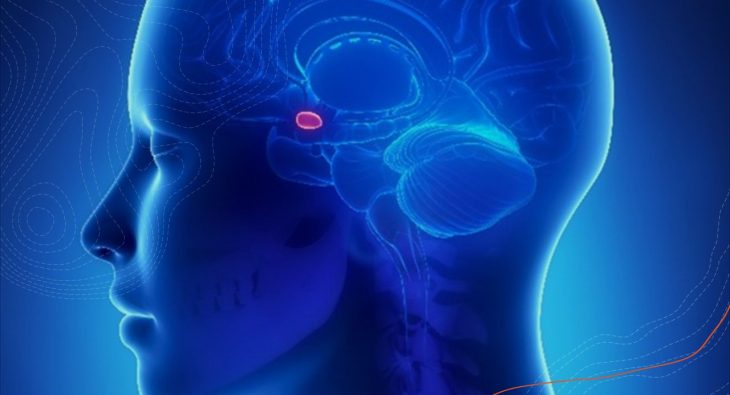Are you neuro nimble? Focus on agility
Lessons for leading in a pandemic
Neuro Nimble blog series 3 of 3: Focus on agility
Author Greg Falvey is an Associate Director at 4i Solutions Ltd. He provides ledership programmes and executive coaching. He has a long career in the social housing sector and is currently Vice Chair for Southdown Housing Association providing housing, support and care services.
In our increasingly VUCA (volatile, uncertain, complex and ambiguous) world our organisations have to show agility, the ability of the organisation to adapt rapidly to change to mitigate the negative impacts of the pandemic and to maximise on the opportunities for maintaining performance. This requires that our leaders and staff are also able to demonstrate agility.
In our third blog in the Neuro Nimble series, we’re looking at the role of brain chemistry and neurotransmitters. How as leaders we can use this understanding to help our people and our organisations, with a focus on agility.
Leadership agility is the ability to understand the changing conditions around you and to adapt your approach to manage those changes. But this agility is in danger of being hampered by what neuroscientists are calling ‘brain fog’. The pandemic has degraded our social interaction, it has made our daily experiences less distinct from one day to another, it affects your ability to think clearly and be organised. We need external stimulation, and the distinctness of pre-pandemic days, to sharpen our thinking and clear the fog.
“After months of prolonged stress, brain fog or pandemic fatigue is unfortunately common. Brain fog is – a state of cognitive dysfunction that makes the brain processes slower and less efficient.” Says neuropsychologist, Dr K Keane.
The Highjack
So what’s going on? Studies are now underway, but what we already know is that when we are in stressful situations, we can experience an ‘amygdala hijack’, a term first coined by the psychologist Daniel Goleman in his book on Emotional Intelligence.
Our brains receive stimuli that arrive at the Thalamus, a kind of relay station. It is then directed to the neocortex, dealing with higher brain functions, and then on to the amygdala, at the base of the brain. The amygdala is a more primitive, emotional centre, that drives the so called ‘fight or flight’ response. In normal circumstances the neocortex will regulate the emotional response with reason and rational decision-making. When we are under attack the amygdala receives the information from the stimuli at the same time as the neocortex, it reacts milliseconds before the neocortex can regulate the response. The amygdala has highjacked the situation!
The fight or flight response kicks in and the body releases adrenalin and cortisol. Whilst we no longer face the primitive physical threats from tigers, we do suffer the psychological threats of the stresses and burdens of modern life. The cortisol stifles free thought and creativity, and can crowd out the positive benefits of key neurotransmitters like serotonin and oxytocin, which can affect our mood and add to stress and anxiety.
Brain training and plasticity
Managing in the pandemic requires the ability to face new circumstances head-on and to adapt your style and your message accordingly.
Look up ‘leadership agility’ and it won’t be long before you come across articles and studies showing some common traits:
- Adapting to context
- Building self-awareness
- Listening to staff and clients
- Accepting that you don’t have all the answers
But if we are to be truly agile, we need to utilise what neuroscientists call neuroplasticity. The ability to adapt and make positive changes following important experiences like the Covid pandemic experience. To create a positive mindset out of the fog and cognitive dysfunction of the pandemic we need neuro plasticity to furrow new neurological pathways, changed thinking, and a positive psychology. As we face new challenges, we need to help our brains remodel themselves by allowing nerve cells to respond by generating new dendrites, the tendrils that connect one nerve cell to another. This plasticity is fundamental to agility in behaviour and learning. It’s how we get our bounce-back-ability.
Exercise is great for helping to produce the proteins necessary for plasticity to happen. There are other ways we can encourage this plasticity within our organisations.
- Involve staff in creating the organisation’s purpose on the journey to post pandemic. Help them to own that purpose and emphasise the importance of their participation.
- Get your teams to engage in new activities, especially creative activities. Include play and experimentation.
- Create social opportunities and social places at work.
- Take your teams away to new and stimulating environments.
Serotonin
Neurotransmitters are chemical messengers, sending messages between neurons that illicit different reactions. Serotonin is a key neurotransmitter that stabilises our mood, improves wellbeing and happiness. It also improves our cognitive abilities. It boosts self-esteem, confidence, a sense of direction and meaning, and success. Great attributes for a leader presenting as calm and purposeful.
Increase your serotonin by taking a walking meeting outdoors, get close to nature and soak up ultra-violet and vitamin D. Gratitude giving increases serotonin so thank your colleagues and your team. Knowing that your work has meaning and purpose sustains serotonin. Your work is important, remind yourself and your team of this, and their success, to boost their serotonin. Just the act of engaging with your colleagues and listening will increase serotonin, improve your mood and theirs. Working from home with little contact you can see how this might spiral the other way. Serotonin is known as the happy chemical. Other neurotransmitters are part of this happy family, notably dopamine, endorphins and oxytocin.
Dopamine

If you want to clear that pandemic fog, then you’ll want to increase your Dopamine. Dopamine is the pleasure chemical that plays a huge role in motivation, achievement and reward. It helps to create focus and concentration. It helps to provide the drive to set and achieve goals, and it rewards you when you do. So how do you get more of it?
You can drink coffee and eat dark chocolate, that helps momentarily, but you can’t do that endlessly. Instead, set yourself, and your team, bite sized targets and goals. As one of my colleagues says, slice up that elephant into bite sized chunks. Break down that ambitious annual target into something to achieve that week and when the team achieve it – celebrate – release dopamine and get charged for the next goal in a virtuous cycle.
Endorphins
Endorphins are another success neurotransmitter. The high you get from a major park run makes you feel great; that’s the work of endorphins. They help to reduce pain and they also raise the spirits. Without endorphins your world will feel glum, and that pandemic fog will linger, increasing anxiety and even impulsivity. That’s when mistakes happen. Increase endorphins and reduce stress and anxiety.
So how do we increase our endorphins? Run a marathon and eat hot peppers! But we don’t need to don vibrant Lycra and achieve that ‘runners high’, moderate exercise will do the trick, a stroll at lunchtime. But also being creative. Do you bring your team together once a week to work on a problem or an opportunity creatively – a gathering without formality to allow for free thinking. Volunteering and giving of yourself will also increase endorphins. Re-establish that volunteer day at your organisation. Volunteer to be a ‘well-being champion’ and organise virtual or literal coffee mornings (where you’re not allowed to talk about work) to bring back the social and the laughter. Meditation and yoga also help. And guess what, increasing your endorphins to achieve that small goal, like a 20 minute yoga session, will increase your dopamine. A double whammy.
Oxytocin
The last in our family of happy neurotransmitters is oxytocin. You may have heard of this as the ‘love hormone’ as it is associated with sex, love and childbirth. More relevant for our work, it is also known for its association with empathy and trust. Oxytocin reduces stress and increases the sense of security. Some call it the attachment hormone because it increases loyalty and bonding between colleagues. Oxytocin helps us to collaborate and communicate.
We can increase oxytocin by helping our colleagues and by mentoring them at work. Listening intently increases oxytocin and empathy for both parties. Listening because you want to hear what your colleague has to say. It may sound obvious but is not always common. Sharing stories of your weekend activities and having a laugh together are an important part of this.
So now is not the time for command and control style leadership. As our teams face the route back from the pandemic we need to listen and encourage. Some simple positive and supportive comments will prompt the production of oxytocin. If we interrupt, criticise and reprimand, we leave them feeling marginalised and their bodies release more cortisol that limits their thinking and their creativity. We came across cortisol earlier in this blog when we looked at the amygdala highjack. Unfortunately, cortisol hangs around the body longer than oxytocin. The oxytocin derived benefits of a great team meeting and a couple of check-in and social calls to you direct reports as they worked from home this week, can be undone in an instant with a mis-timed and mis-judged challenge.
Judith Glaser in the Harvard Business Review talked about the chemistry of conversations. A leadership survey was conducted and covered cortisol creating activities and oxytocin creating activities. The good news is that the leaders engaged more in the oxytocin creating positive behaviours such as showing concern for others, and painting a picture of mutual success.
However, 85% admitted to sometimes derailing this good behaviour with cortisol creating disruption such as demanding our view is the right one, and pretending to be listening to others. The evidence suggests that there is enormous scope for all of us to make huge improvements in this area.
These are difficult times for managers and leaders. Talking this through with your colleagues is a great start and a coaching programme, particularly a strengths-based programme dealing with negative self-talk, is a great way to really challenge yourself and build agility.
Eight take aways
- Share your story of where the organisation is going; openly recognise people’s difficulties and promote a sense of job and organisational security
- Break down projects into bite-sized chunks and celebrate success
- Build a programme of wellbeing champions and wellbeing activities. Walks, meditation, yoga. A brief moment in the day for mind wandering. An opportunity for creative discussions without agenda
- Create opportunities for staff to engage in volunteering activities that add value to the community
- Promote virtual or on-site social activities and create physical, social and collaboration spaces within your offices
- Ensure daily quality interactions between leaders, managers and staff. This includes; active listening and clear messaging
- Plan for and build a mentoring and coaching ethos – this will support your staff and your strategy
- When allowed, take your teams to new and novel environments with stimulating activities
The People Development team at 4i Solutions collaborate with clients to provide leadership development, executive coaching and outdoor experiential learning. Get in touch to find out more.
Read the other blogs in this series:
Are you neuro nimble? Focus on Motivation







